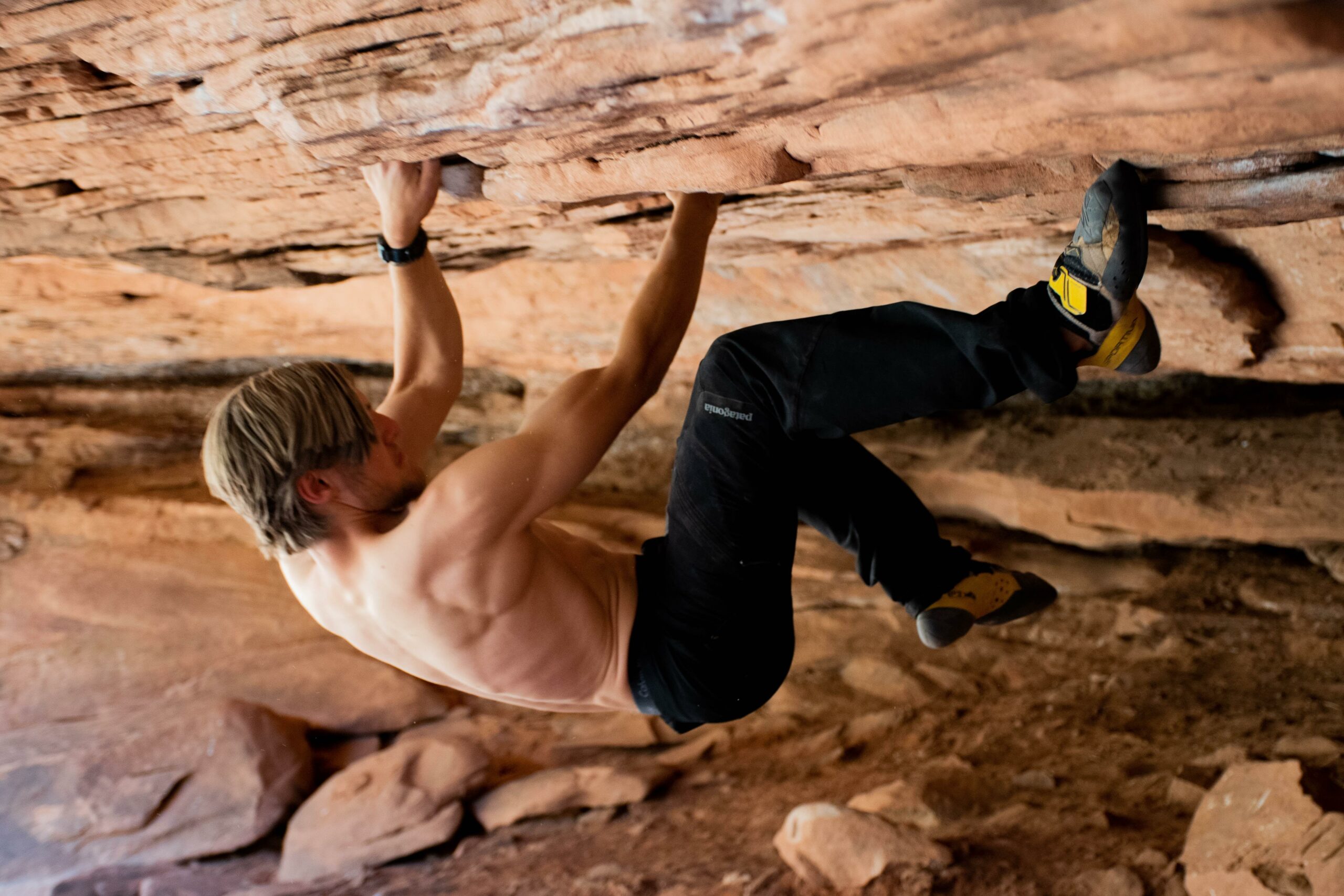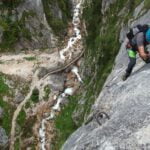Are you ready to embark on an adventurous journey through the world of rock climbing? Brace yourself, as we reveal 10 fascinating facts that will amaze and inspire you. Whether you’re a seasoned climber seeking to expand your knowledge or a curious newcomer looking to delve into this exhilarating sport, this article is your definitive guide to the thrilling and captivating world of rock climbing. From its rich history to the intricacies of gear and techniques, we’ll shed light on the most intriguing aspects of this outdoor pursuit. So, grab your harness, chalk up your hands, and get ready to explore the heights of rock climbing!

10 Interesting Facts About Rock Climbing
Rock climbing is a thrilling and challenging sport that has captivated adventurers for centuries. From its ancient origins to its modern-day techniques, there are countless fascinating facts to discover about this exhilarating activity. Whether you’re a seasoned climber or just beginning to explore the sport, these 10 intriguing facts about rock climbing are sure to amaze and inspire.
Rock climbing is one of the world’s oldest hobbies: Humans have been ascending cliffs and rocks since the Bronze Age, as evidenced by ancient paintings and artifacts. The desire to conquer challenging terrains and reach new heights is deeply ingrained in our history.
The first documented rock climb took place in 1492: While rock climbing has been practiced for centuries, the first documented ascent occurred in 1492 by Antoine de Ville, who climbed Mont Aiguille in France. This historic feat paved the way for future adventurers to push the boundaries of what was thought possible.
Rock climbing wasn’t officially recognized as a sport until the late 19th century: While people had been climbing rocks for centuries, it wasn’t until the late 19th century that rock climbing began to be seen as a legitimate sport. This recognition led to the development of specialized gear and techniques that have since revolutionized the sport.
Bouldering originated in Fontainebleau: Bouldering, a form of rock climbing that involves shorter ascents on large rocks or boulders, originated in the forests of Fontainebleau, France. Today, Fontainebleau remains a mecca for boulderers from around the world, attracting climbers of all skill levels.
Rock climbing is one of the few sports that works the entire body: Climbing engages not just your arm muscles, but also your core, back, and leg muscles. As you navigate challenging routes and make precise movements, you’ll be giving your entire body an incredible workout.
Climbing made its debut at the 2020 Tokyo Olympics: In a historic moment for the sport, rock climbing made its official debut at the 2020 Tokyo Olympics. Athletes showcased their skills in three disciplines: speed climbing, bouldering, and lead climbing, captivating audiences around the world with their athleticism and determination.
There are eight different types of climbing: Rock climbing encompasses a variety of styles and techniques, each offering its own unique challenges. From traditional climbing to sport climbing, bouldering to ice climbing, there’s a type of climbing to suit every adventurer’s preferences and abilities.
The first rock climbing shoe was created in the 1930s: Before the invention of specialized rock climbing shoes, climbers had to rely on traditional footwear or even go barefoot. It wasn’t until the 1930s that the first purpose-built climbing shoe was created, providing climbers with better grip and protection.
Nylon climbing rope wasn’t invented until the 1940s: Nylon, a durable synthetic material, revolutionized the world of rock climbing when it was first introduced in the 1940s. Prior to its invention, climbers used hemp or manila ropes, which were heavier and less reliable.
Yvon Chouinard is credited with being the inventor of clean climbing practices: Clean climbing, also known as ethical climbing, involves minimizing environmental impact and leaving no trace behind. Yvon Chouinard, founder of outdoor brand Patagonia, is credited with pioneering clean climbing practices, emphasizing the importance of preserving the natural beauty of climbing areas.
As you delve deeper into the world of rock climbing, you’ll discover countless more fascinating facts and stories. It’s a sport that challenges both the body and the mind, offering a unique sense of achievement and adventure. So grab your gear and embark on your own rock climbing journey, exploring the heights and uncovering the wonders of this awe-inspiring sport.
“Every ascent is a testament to human courage, determination, and the indomitable spirit to conquer the impossible.”
Rock climbing is an exhilarating sport that challenges both the mind and body. If you’re looking to learn more about this thrilling activity, we’ve got you covered. Discover fascinating facts about rock climbing and delve into its rich history and techniques. Click here to uncover the secrets of this awe-inspiring sport: facts about rock climbing. Whether you’re a seasoned climber or just starting out, this information is sure to pique your interest and instill a sense of adventure. So go ahead, click the link, and embark on a journey of discovery.
There’s no denying the thrill of rock climbing – the adrenaline rush, the breathtaking views, and the sense of accomplishment are second to none. If you’re a fan of this exhilarating sport or simply interested in learning more about it, we’ve got you covered. Prepare to be amazed by these 10 interesting facts about rock climbing. Did you know that the world’s highest artificial climbing wall stands at a staggering 164 feet? Or that geckos are natural rock climbers and can even climb smooth surfaces using van der Waals forces? These intriguing facts about climbing will leave you wanting to explore more. So, grab your gear and get ready to be inspired. Check out our article on “amazing rock climbing facts” and “intriguing facts about climbing” to dive deeper into this fascinating world. Happy climbing!
The Basics of Rock Climbing Explained: A Comprehensive Guide to the Different Types of Climbing
[youtube v=”VtIyrJCfhk4″]
Rock Climbing: An Adventure Like No Other
Have you ever considered trying rock climbing but found yourself intimidated by the thought of it? You’re not alone. Rock climbing, like any sport, can appear daunting for beginners. But fear not! With a little knowledge and practice, you can conquer the wall and embrace this exhilarating activity.
In this article, we will delve into the world of rock climbing, exploring its various forms and shedding light on the do’s and don’ts. Whether you’re a seasoned climber or new to the sport, this guide will provide valuable insights into the different types of climbing techniques, equipment, and even some quirky details you may not have known.
Let’s embark on this rock climbing journey together and uncover the secrets of scaling new heights!
Free Soloing: The Ultimate Test of Courage
One of the most famous types of rock climbing is free soloing. This heart-pounding approach involves climbing outdoor rock faces without any gear, except for your climbing shoes and maybe a chalk bag. It’s the purest and most dangerous form of climbing, often leaving spectators in awe.
When discussing free soloing, one name inevitably springs to mind: Alex Honnold. Renowned for his remarkable achievements, Honnold captivated the world when he climbed El Capitan, one of the most challenging rock formations, without a rope. While this extreme pursuit may seem perplexing to some, it resonates with those who have experienced the thrill of conquering great heights.
“Free soloing is one of the most fulfilling types of rock climbing because you’re basically guaranteed to die doing what you love, which is avoiding all social responsibility.”
Aid Climbing: Tapping into Outside Assistance
While free soloing captures the essence of pure rock climbing, there is another variation known as aid climbing. Aid climbing incorporates outside assistance, such as using a harness with an Ascender and Ladder system to aid in ascending the climb. Although aid climbing dilutes the purity of free soloing, it remains a valid form of the sport.
However, for those who seek the ultimate connection with the wall, true aficionados maintain that aid climbing should be avoided at all costs.
Trad Climbing: Combining Safety and Adventure
Traditional climbing, also known as “Trad,” strikes a fine balance between safety and adventure. Climbers tackle the same colossal cliff faces as free soloists, but with the added security of a harness and rope. As they ascend, they place anchors along the route with their trailing partners removing them on their ascent.
“Having a climbing partner in trad climbing? It’s Aid, my friend!”
Bouldering: Short, Technical, and Adrenaline-Pumping
If you’re looking to get a taste of rock climbing without the daunting heights, bouldering might be the perfect choice. This popular and exhilarating form of climbing involves short, technical climbs known as boulder problems. With no ropes or harnesses, climbers rely solely on their chalk-covered hands and specialized bouldering shoes for grip.
“Bouldering and free soloing are similar in many ways. Just imagine free soloing as one massive boulder problem.”
Ice Climbing: Scaling Frozen Waterfalls
Unlike the other types of climbing, ice climbing poses a unique challenge. Ascending frozen waterfalls requires climbers to create their own holds by thrusting ice picks into the frozen walls. It’s a breathtaking sight to witness climbers repeatedly pressing upward, with their partners eagerly awaiting their turn.
“Ice climbing? It’s like climbing a giant sheet of ice with nothing but your ice picks and determination!”
Competition Speed Climbing: The Need for Speed
In the world of rock climbing, speed climbing has carved out its own niche. Climbers vie against the clock to navigate an internationally standardized route as swiftly as possible. Although some criticism surrounds this form of climbing, it has gained recognition through its inclusion in the Olympic Games.
“Speed climbing might receive some flak, but it’s all about pushing the limits and competing!”
Highlights of Rock Climbing
To summarize our rock climbing adventure, let’s highlight some key takeaways:
- Rock climbing offers an unparalleled adventure, engaging the entire body and testing one’s limits.
- The sport has a rich history, dating back to ancient times, and has evolved into various forms over the centuries.
- Each type of climbing presents its own challenges and appeals to different adventurers.
- Climbing equipment, such as shoes, ropes, and harnesses, has undergone significant advancements throughout history.
- Rock climbing has even made its mark in the world of competitive sports, gaining recognition in prestigious events like the Olympic Games.
Remember, this article merely scratches the surface of rock climbing’s vast universe. Whether you’re a seasoned climber or a novice, it’s important to approach this sport with caution, respect, and the desire to continuously grow.
So, strap on your climbing shoes, chalk up your hands, and embark on your own rock climbing journey. Let the wall be your canvas as you conquer new heights, one hold at a time.
“Rock climbing: an exhilarating blend of adventure, conquest, and self-discovery.”
FAQ
Question 1: How long has rock climbing been around?
Answer: Rock climbing is one of the world’s oldest hobbies, with evidence of humans ascending cliffs dating back to the Bronze Age.
Question 2: When was the first documented rock climb?
Answer: The first documented rock climb took place in 1492.
Question 3: When was rock climbing recognized as a sport?
Answer: Rock climbing wasn’t officially recognized as a sport until the late 19th century.
Question 4: Where did bouldering originate?
Answer: Bouldering originated in Fontainebleau.
Question 5: What are the different types of climbing?
Answer: There are eight different types of climbing.
- Unlock Water’s Symbolism: A Cross-Cultural Exploration - April 20, 2025
- Identify Black and White Snakes: Venomous or Harmless? - April 20, 2025
- Unlocking Potential: Origins High School’s NYC Story - April 20, 2025















